Decorating with Microcement
Microcement is an increasingly popular design choice for achieving a flawless industrial aesthetic in interior design projects. This is because, decorating with microcement offers a practical alternative to traditional concrete and with very similar results. Read on to discover more about microcement.
The benefits of Microcement
Microcement can be applied to virtually any surface. It is common as a surface finish to give walls a decorative effective. It is also a versatile and cost effective alternative to polished concrete or floors. Here it has numerous advantages over conventional concrete mainly because it doesn’t need any heavy machinery.
Microcemenent walls applied by Ferri Interiors in a kitchen extension project
It is good to use inside and outside because of its low permeability. Additionally it also bonds well to any surface and sets soon after application. It also doesn’t contain any chlorine, a common additive to concrete to speed up setting time, making it a more natural solution. Finally, it doesn’t shrink on application which means no cracks or folds will occur on the surface.
Microcement in interior design
For interiors microcement is a versatile product as it comes in a wide range of textures, tones and colours. As well as being waterproof, it is durable so it can be used for areas that get a lot of wear and tear such as kitchen counters, splashbacks and flooring. The good news is, as it can be applied over any surface. You can remodel your entire bathroom including walls, floors, cupboards – even basins and toilet – without removing the tiles!
Decorating kitchens with microcement
Microcement is the go to material to achieve a stylish industrial finish in modern kitchens. It’s durable finish is perfect for worktops and splashbacks. Adding coloured finishes really brings in the style. Traditional grey finishes for a traditional industrial look. Add bold brights for an eclectic, colourful home.
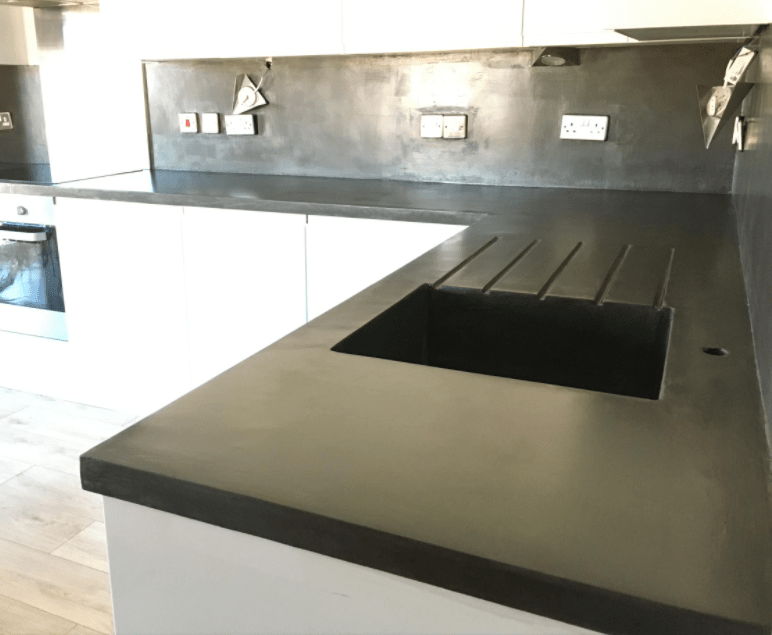
A black microcement kitchen worktop created by C Ferri Interiors
Alternatively soft creams and neutral tones create the enduringly popular scandinavian look. As well as worktops, open cupboards and shelves can also be created with a microcement surface. Complete with beautifully arranged crockery, glasses and hose plants for the open shelf look that is now on trend.
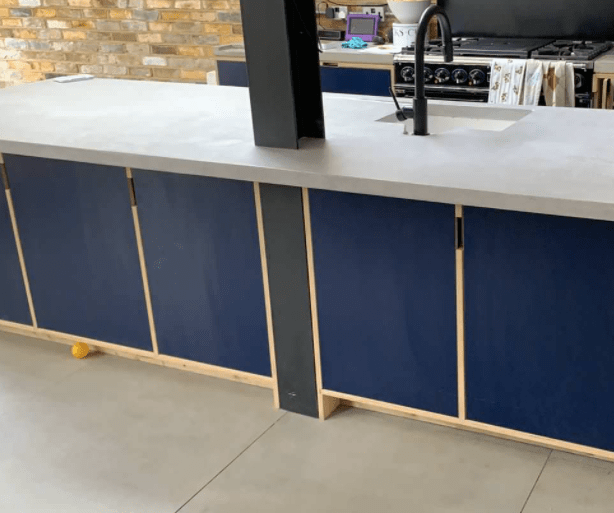
White microcement kitchen worktop by C Ferri Interiors
Decorating flooring and walls with microcement
As decorating with microcement is affordable as well as durable, it makes a very good option for large surfaces such as indoor and outdoor walls and flooring. It’s hard wearing and gives a seamless yet stylish soft industrial aesthetic. Hence it can even be used in living rooms and bedrooms, where you can add subtle pigments for more warmth. The neutral cement texture is a great background to highlight statement rugs or contemporary artwork. Stairs can also be transformed with microcement.
Bathrooms and wet rooms
Microcement doesn’t lose its flexibility with age. This makes it a perfect choice in bathrooms and wet rooms – even where there is underfloor heating. It’s waterproof so it makes the perfect choice for those rustic style smooth wall wet rooms seen in design magazines.
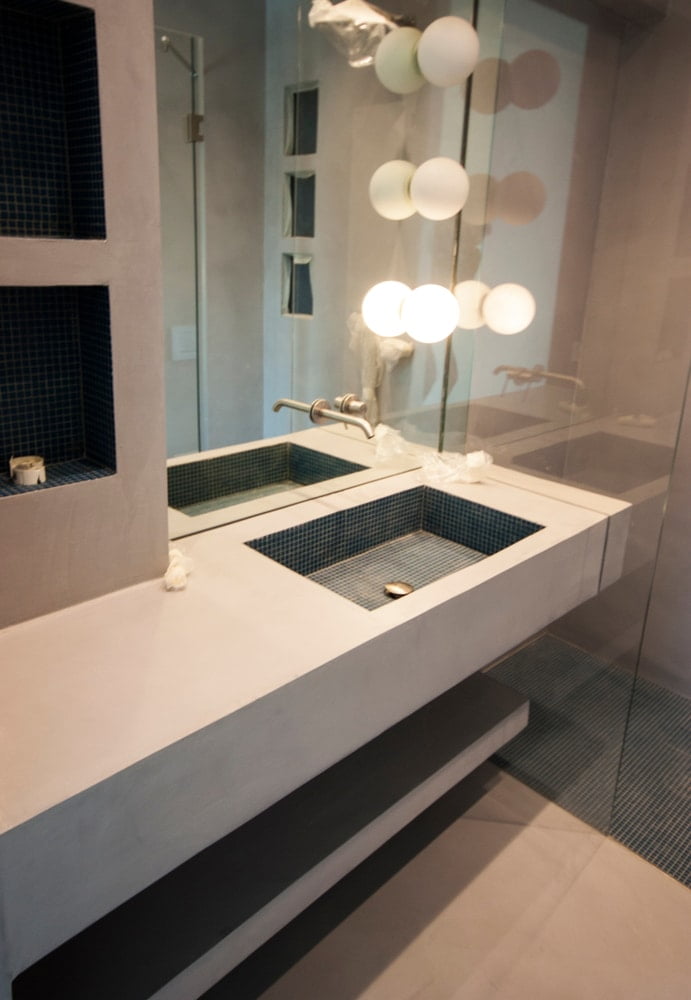
More importantly, it’s anti-slip and mould-free. Across the continent and particularly in Spain, you’ll often see it as finish for pool surrounds, terrace baths and outdoor showers.
Stages of decorating with microcement
Here’s what’s involved and how long it takes to get the perfect microcement finished surface
-
The surface is sanded smooth and any imperfections filled in
-
A primer is applied to the surface
-
The microcement goes on in layers
-
Smooth the surface to get the perfect finish
-
Let both layers dry for 24 hours and sand down for a smooth finish
-
A first waterproof coat of sealant which leaves a glossy finish
-
Finally applying 3 coats of polyurethane varnish achieves the desired finish

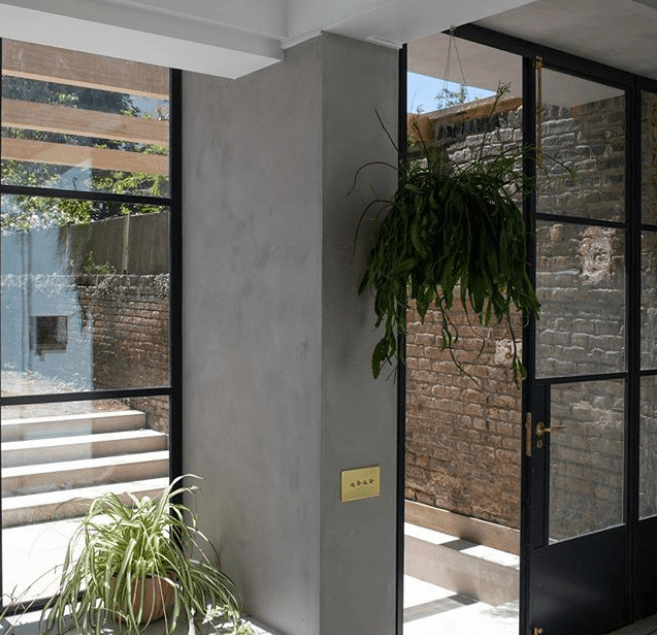
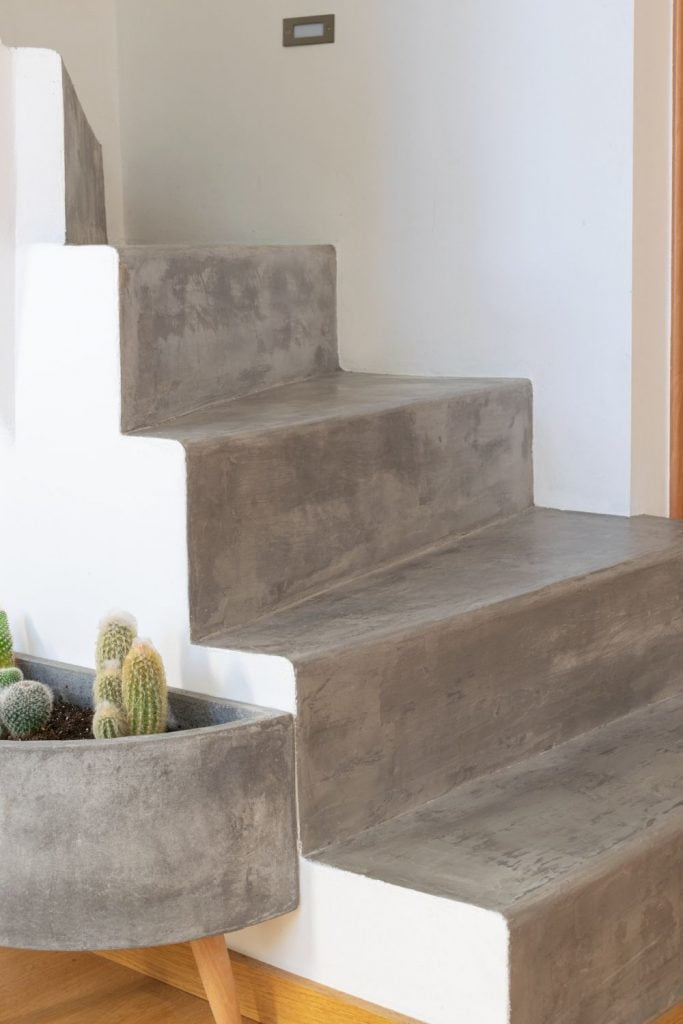
Recent Comments